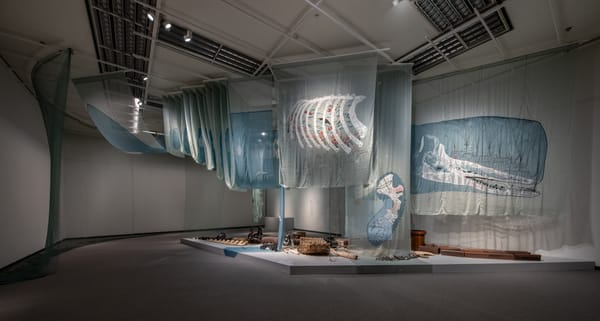Shows
Manoucher Yektai’s “Beginnings”
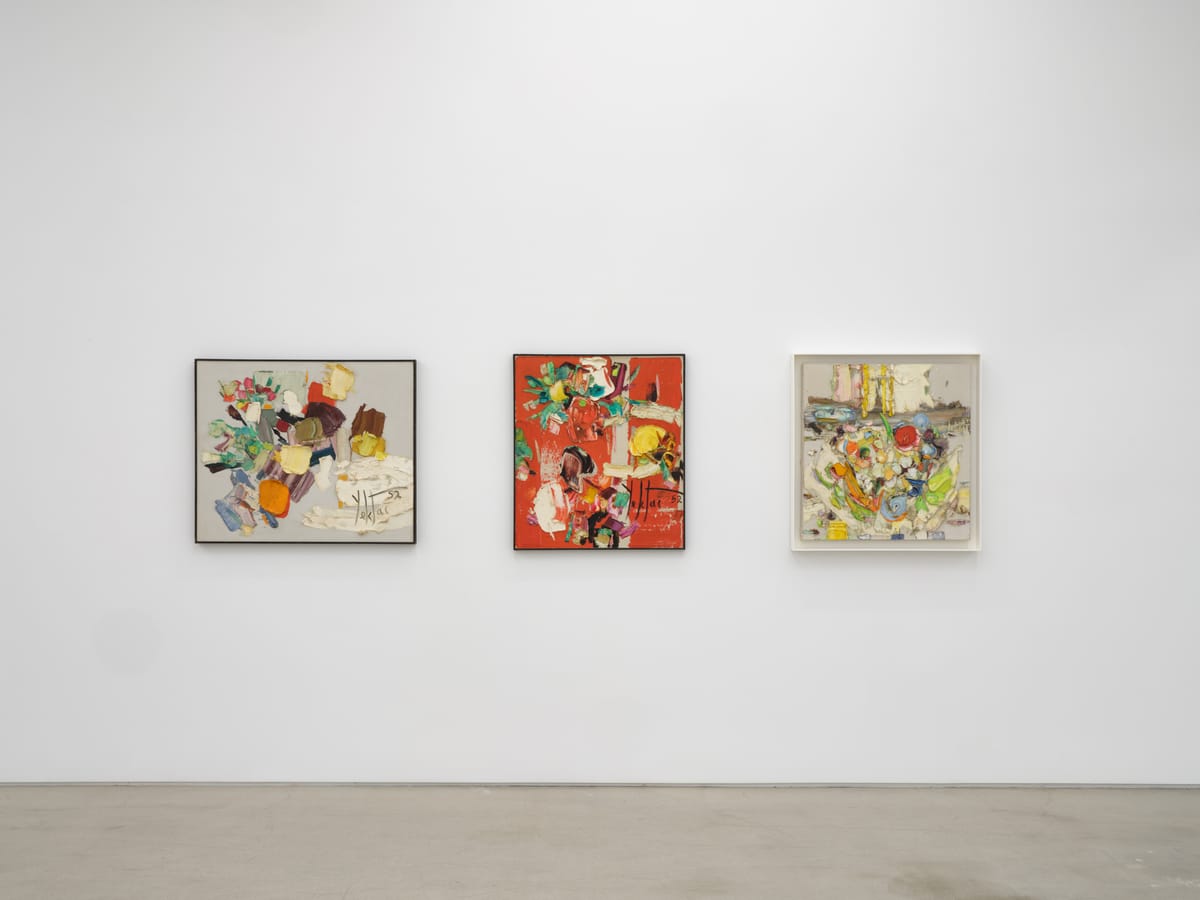
Manoucher Yektai
Beginnings
Karma Gallery
Los Angeles
Sep 20–Nov 1, 2025
“Beginnings,” curated by writer and editor Negar Azimi, was the most comprehensive survey to date of early works by Manoucher Yektai (1921–2019), an artist who belonged to the New York School yet never quite fit its mythology of white male heroism. The Iranian-born painter trained in Tehran, New York, and Paris before settling in New York by 1948, bringing a sensibility shaped by multiple European modernisms (Post-Impressionism, Cubism, Surrealism) alongside his native cultural heritage. Unfolding chronologically across two large rooms, the exhibition featured paintings made between 1948 and 1969 that exemplify how Yektai transformed Surrealist biomorphism into a muscular material language. What emerged was the story of an artist expanding the Eurocentric parameters of abstraction in the US.
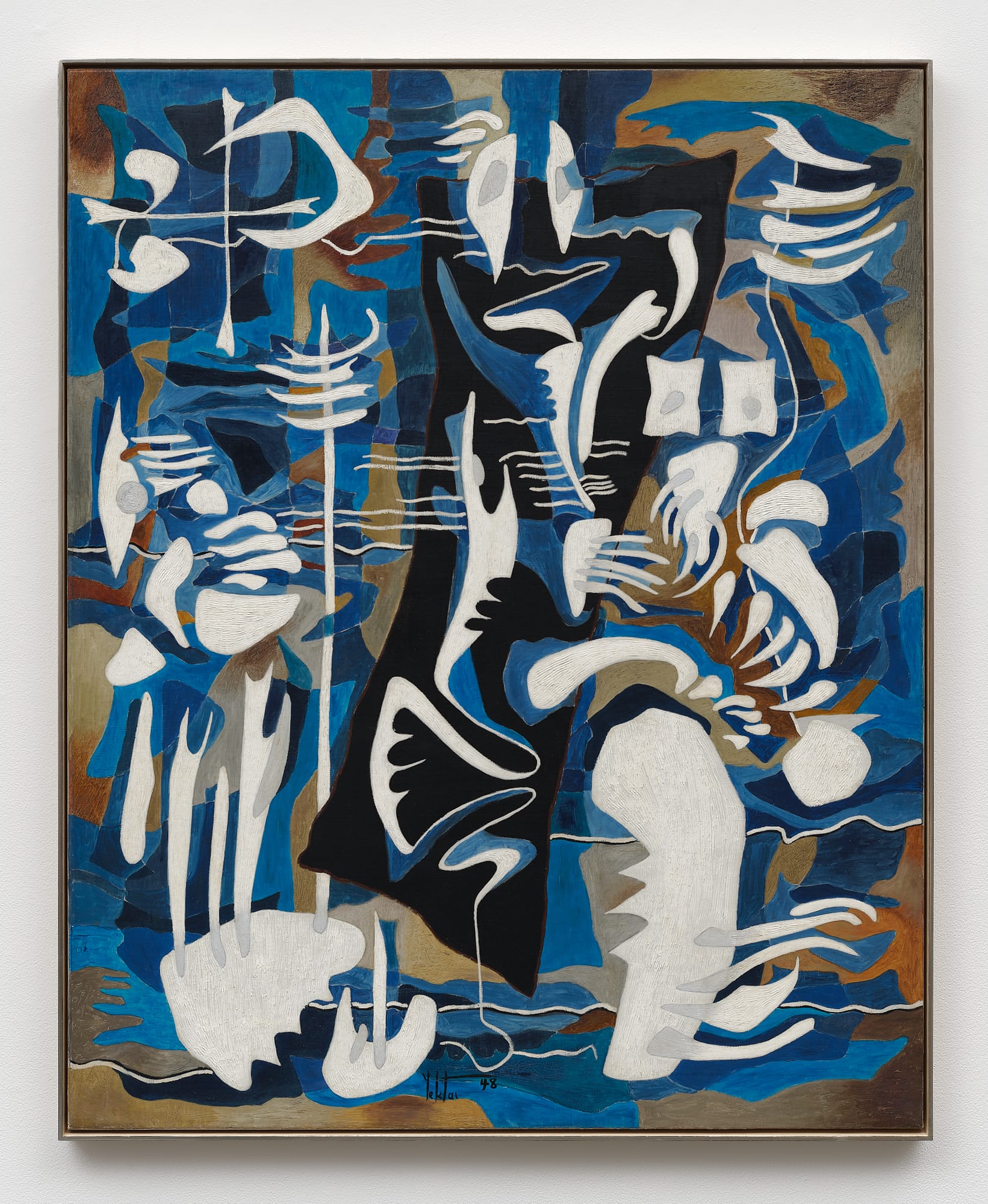
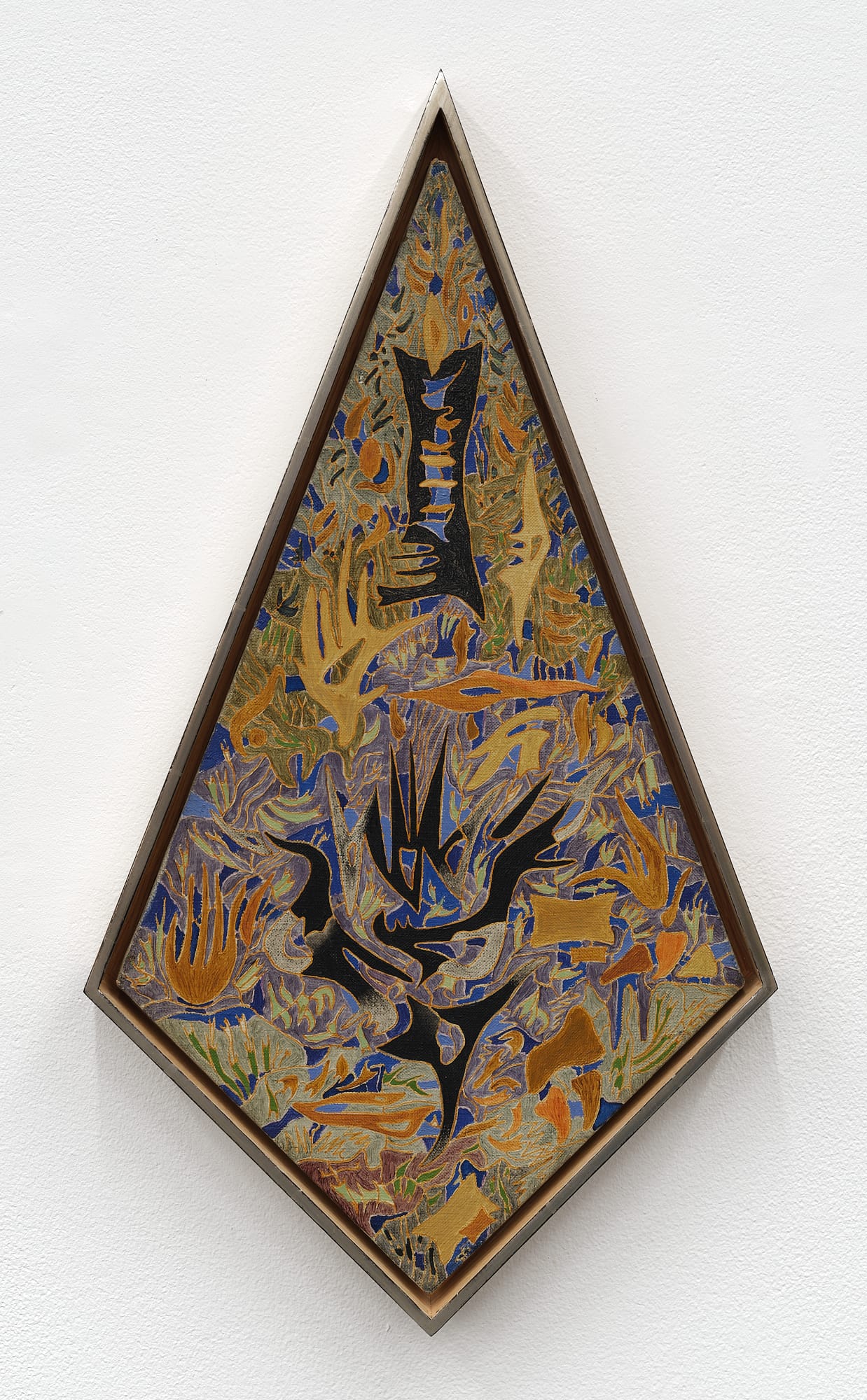
MANOUCHER YEKTAI, Untitled, 1948, oil on canvas, 132.4 × 107 cm, unframed (left); and Untitled, 1949, oil on canvas, 52 × 28.5 cm, unframed (right). Courtesy Karma Gallery, Los Angeles.
Untitled (1948), with whites and blues punctuated by sienna, greeted visitors near the entrance. The curving forms depicted in this work are edged with tooth-like projections. Though the white patches appear smooth at first, a closer look reveals a textured, striated surface, recalling a fine comb that has passed through wet plaster. Hung nearby was Untitled (1949), a smaller, kite-shaped tableau with compressed swirls of purple, orange, and black, reminiscent of intricately patterned Persian carpets as well as the fluid, amoeba-like imagery of Joan Miró and Jean Arp. Two decades before American artists like Ellsworth Kelly or Frank Stella produced their atypically shaped canvases, Yektai treated the edge as a charged, sculptural boundary.
As Iranian curator and scholar Fereshteh Daftari observed in her 2022 book, Yektai: A Search for Modernism, Yektai’s project is “best described in formalist and not nationalist terms, as a rejection of the abstraction-figuration binary.” His early works bear that out: unlike many of his New York contemporaries, Yektai never sought to banish recognizable form or bodily presence from his canvases. Abstraction remained tethered to lived experience; an articulated structure, the density of matter, the texture of skin. By 1949, he was spreading paint with mason’s tools: trowels, spatulas, even a whip, testing how far matter could carry expression. These implements give the paintings their distinctive topography, full of ridges and folds more like stucco than oil paint, as if the image were being built rather than depicted.
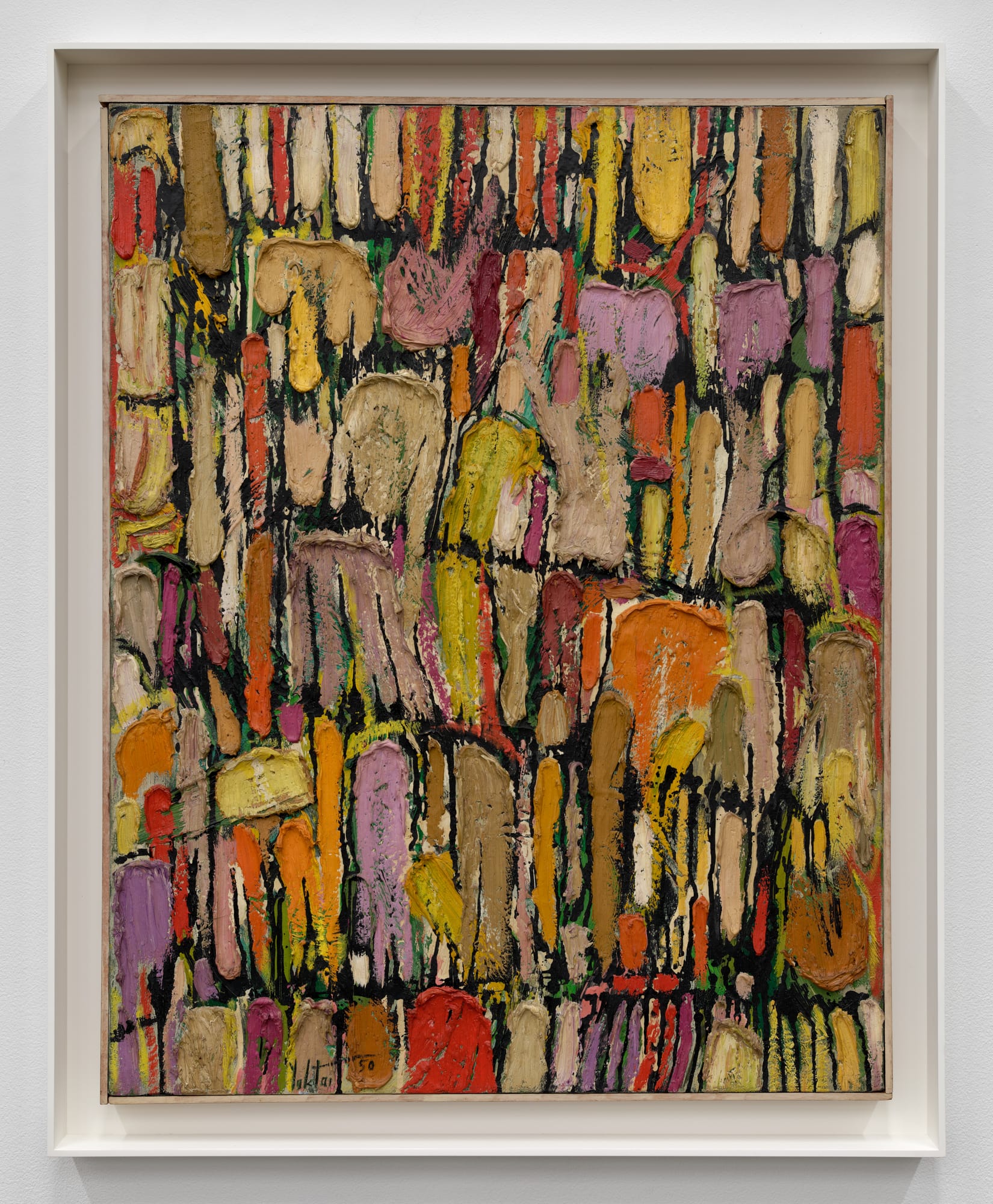
A small-scale, vertical Untitled (1950) bridged the dense geometry of the 1940s with Yektai’s more open, improvisational compositions of the ‘50s. Warm reds, oranges, and pinks are laid in bands, each defined where the knife forced pigment outward, leaving traces of pressure and release.
Representation entered without fanfare. In Still Life with Flowers (1952), thick, colorful smears hover between pure materiality and the visual suggestion of a tabletop. Pigment is unmixed: mint beside fuchsia, violet beside yellow and emerald—the accumulation of strokes coalescing into the image of a bouquet. Here, Yektai treats representation not as imitation but as inquiry; as a way for painting to probe the tactile and perceptual experience of things.
In the second room, one encountered further still-life paintings of tomato plants. The canvases vibrate with white grounds and whiplash green stems, tomatoes pulsing red. Displayed together, they formed a rhythmic wall of gestural memory linking the organic to the abstract. Nearby were portraits such as the large-scale Ilse with White Spoon (1959), which translates that same physicality into psychological terms: long, frenetic strokes outline a female figure half-subsumed by atmosphere, her red lips and smoky eyes emerging from patches of green, brown, and sky blue. Though the paint is still impasto here, one sensed a return of the brush.

Part of what made “Beginnings” so unexpected was its historical corrective. Between 1965 and Karma’s revival of his oeuvre in 2021, Yektai’s paintings largely vanished from view, as the myth of the New York School solidified around a predominantly white male canon. While he has been the subject of some earlier shows and reviews, they often emphasized his work as an adjunct to New York modernism rather than acknowledging his pioneering contributions.
This latest exhibition offered Yektai as a precursor, underlining Daftari’s argument that New York modernism was never so monolithic. Today, Yektai’s refusal of categories (abstraction or figuration, East or West) feels relevant—“Beginnings” highlighted an artist for whom tactility was a source material and paint itself a way of belonging to more than one world.
Liz Hirsch is a Los Angeles–based art historian and assistant professor at Otis College of Art and Design. Her writing has appeared in various publications, including Hyperallergic, Art in America, ARTnews, Frieze, and The Brooklyn Rail.







